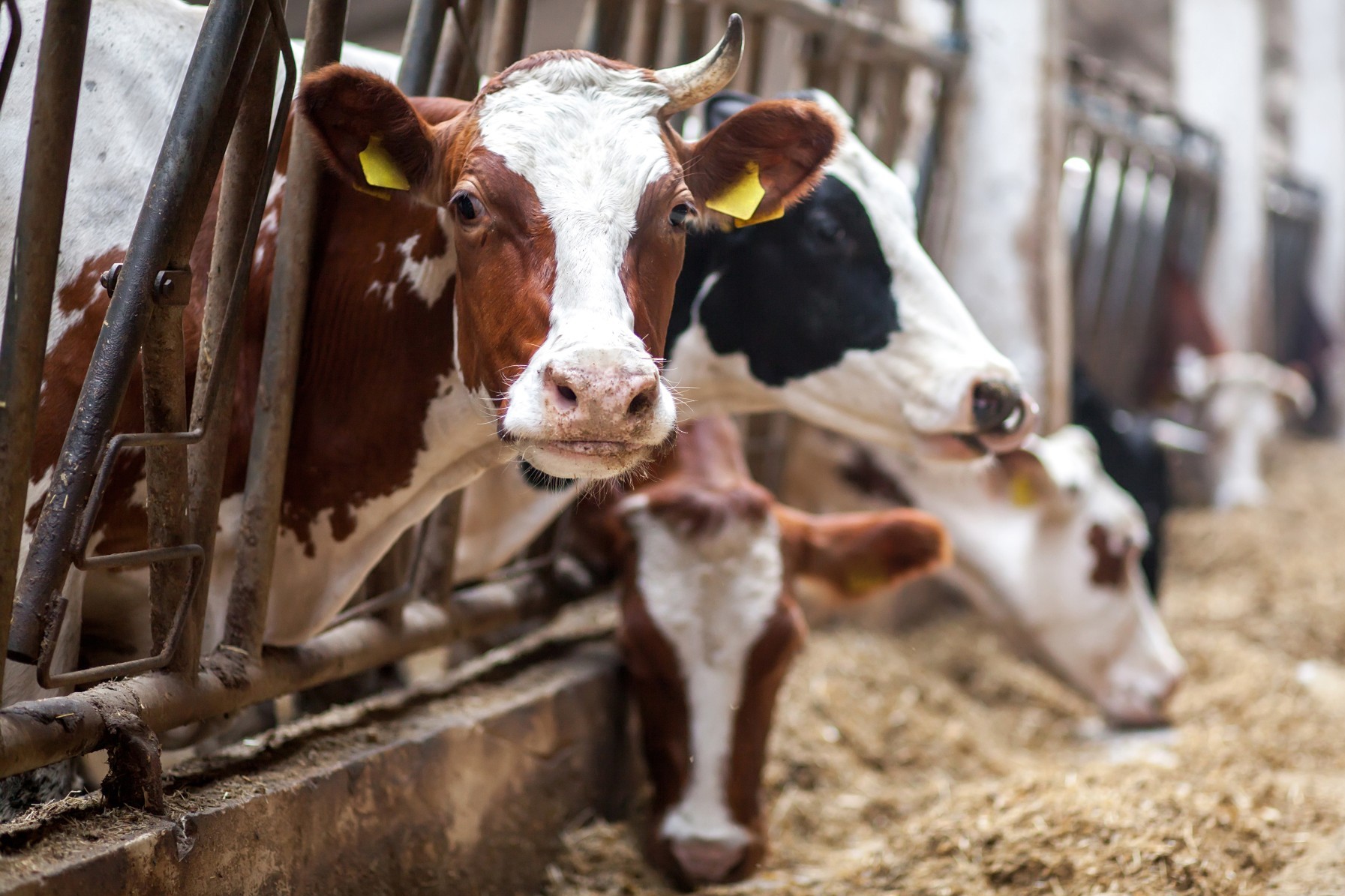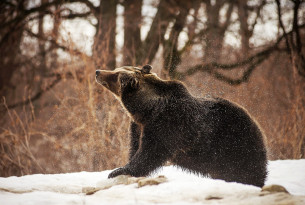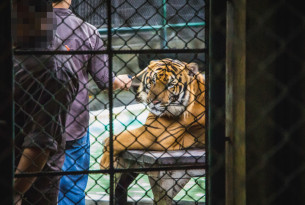
Canada’s Code of Practice for the care and handling of dairy cattle is up for review and public comment
There are around 1.4 million dairy cows in Canada and most of them are housed in close confinement with no access to outdoors. Tell the National Farm Animal Care Council (NFACC) and code development committee that this is unacceptable!
By Lynn Kavanagh, our campaign manager for animals in farming
You may be surprised to hear that most dairy cows in Canada have little to no outdoor access. Most live their entire life housed in tie stalls, a housing system that keeps cows tied to their stall nearly 24/7.
NFACC’s Code of Practice for the Care and Handling of Dairy Cattle (Dairy Code) sets the standard for the 10,0951 dairy farms in Canada1. While NFACC’s Codes of Practice are mostly voluntary2, this is the only national standard we have in Canada and it has helped lead to positive welfare changes with many farm animal producers. Last month, NFACC released the updated draft Code of Practice for the Care and Handling of Dairy Cattle and unfortunately it has not addressed many serious welfare concerns.
While there have been some improvements since the last dairy code was developed in 2009, the changes are modest, and we believe the industry should be more progressive in its goals to improve animal wellbeing.
What you can do
The dairy code is open for public comment until January 27th, 2022 and we encourage members of the public to make a submission to show that Canadians care about farm animal welfare. Public comments are submitted via NFACC survey (using Survey Monkey). It takes approximately 20-30 minutes to complete the survey but the impact is huge, affecting 1.4 million dairy cows each year.
The survey is organized by sections of the code. Below are the key issues we’ve identified along with some guidance for making your own submission.
Calf housing requirements in the code show some positive change, namely, that calves must be housed in pairs or small groups. However, the phase in date of 2033 (12 years) is much too long. We believe five years is enough time for producers to achieve this change.
Tie stalls are a form of housing common to the dairy industry where cows are tethered at the neck to their stall, restricting their movement and their ability to socialize, graze and groom, and perform other natural behaviours. On some farms, tied cattle are permitted seasonal access to pasture, but otherwise their movements are restricted compared with cows housed in free stall barns or other loose housing systems. Approximately 75% of dairy farms use tie stall housing.
Research shows that cows benefit greatly from access to outdoors and being on pasture. Housing attributes are extremely important to dairy cow welfare and comfort. Animals should be in systems that permit them to walk around and socialize, access the outdoors, lie down comfortably (some stalls are too small for cows causing chronic health problem). Deeply bedded stalls that permit cows to lie down comfortably helps to prevent lameness and mastitis - two common health conditions afflicting dairy cows.
Tie stalls should be phased out. The Canadian Organic Standard already requires producers to phase out tie stalls by 2030 and we believe that NFACC should include this in the updated code for all producers.
At the end of their productive period, dairy cows are sent to slaughter. In many cases, animals are already suffering from illness or painful conditions such as lameness (foot or limb injuries), mastitis (infection of the mammary glands), digestive disorders, poor body condition or respiratory disease.
Given the long-recognized welfare concerns of cull dairy cows, the code now requires farmers to assess animals for ‘fitness for transport’.
- Let the code committee know that you support this change and that its important farmers are educated on the importance of shipping only health, fit animals.
- There should be an explicit requirement that says cows still in heavy lactation must be dried off before shipping.
- Only healthy, fit animals without injury or illness must be shipped to assembly centres, breeding stock sales and livestock sales.
When dairy cows give birth, the calf is removed immediately, before the mother and calf have time to bond. The reasoning is that it reduces the distress to the mother and calf compared to later separation. It also preserves the cow’s milk for human consumption. However, there are alternatives, such as gradual weaning at a more natural pace. Some farmers have adopted or are beginning to experiment with this approach which is considered more humane.
Cow-calf separation an issue that is receiving increasing attention from the public, animal welfare scientists and farmers. The issue being included in the code’s scientific report is a testament to this fact. However, the code neglects to address it altogether. Although it is a challenging and contentious issue, the industry must acknowledge it and begin to look at improvements can be made for the future.
We recommend this issue be included in the code to ensure it’s identified as an area to be better understood and to prepare producers for future change. This is an important first step. Producers and industry should be prepared to explore practices that promote keeping calves with the dams for extended periods, with gradual weaning and separation, depending upon research findings in this area.
It is also important to acknowledge the positive advances made by the industry in this code. Below are areas where the code shows meaningful improvement.
- There is a stronger position against electric trainers in this code. However, the wording is ambiguous and could be revised for clarity by removing the “recommendation” that says,” “for maintenance: position the trainer to 10 cm (4 in) or higher above the top line of cattle after the training period.”
- Calf feeding requirements are better and include feeding calves to “satiety”
- The bedding requirement for cows as good bedding will positively impact cow comfort and injury healing
- There are now strict rules against the use of electric prods, requirements for pain management for dehorning and disbudding, and prohibition of tail-docking and branding
Take action – submit your comment to the NFACC code development committee
To submit a comment, please complete NFACC’s survey via Survey Monkey. Please remember to put the comments in your own words.
- Start the NFACC public comment survey via Survey Monkey
- View the full draft code on the NFACC website.
- View the NFACC page on the code of practice of dairy cattle
The code includes more sections than we listed. Please feel free to comment on other sections in the survey. You can skip sections and still proceed forward to submit your comment.
Sources:
1Agriculture and Agri-Food Canada: Canada's dairy industry at a glance. https://agriculture.canada.ca/en/canadas-agriculture-sectors/animal-industry/canadian-dairy-information-centre/canadas-dairy-industry-glance
2Requirements in the Codes “may be enforceable under federal and provincial regulation” but only in provinces where the Codes are cited in animal cruelty laws. https://www.nfacc.ca/codes-of-practice



